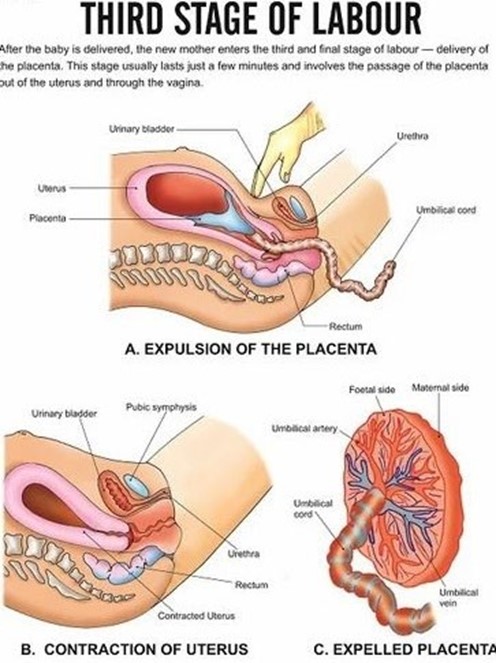A nurse explains to new parents that their newborn has developed respiratory distress syndrome (RDS). Which of the following assessments that the nurse makes would support a diagnosis of RDS?
Select one:
Apical pulse of 148 beats per minute.
Respiratory rate of 40 during sleep.
Skin color jaundiced.
Chest retractions.
The Correct Answer is D
Choice A Reason: Apical pulse of 148 beats per minute. This is not a finding that would support a diagnosis of RDS, but rather a normal finding for a newborn. A normal apical pulse for a newborn ranges from 120 to 160 beats per minute. A high pulse rate may indicate fever, infection, anemia, or dehydration. A low pulse rate may indicate hypothermia, hypoxia, or heart block.
Choice B Reason: Respiratory rate of 40 during sleep. This is not a finding that would support a diagnosis of RDS, but rather a normal finding for a newborn. A normal respiratory rate for a newborn ranges from 40 to 60 breaths per minute. A high respiratory rate may indicate respiratory distress, infection, or metabolic acidosis. A low respiratory rate may indicate respiratory depression, hypothermia, or narcotic exposure.
Choice C Reason: Skin color jaundiced. This is not a finding that would support a diagnosis of RDS, but rather a different condition called jaundice. Jaundice is a yellowish discoloration of the skin and mucous membranes caused by elevated levels of bilirubin in the blood. Bilirubin is a breakdown product of hemoglobin that is normally excreted by the liver and kidneys. Jaundice can occur in newborns due to immature liver function, increased red blood cell breakdown, or blood group incompatibility. Jaundice does not affect lung function or oxygenation.
Choice D Reason: Chest retractions. This is because chest retractions are a sign of respiratory distress that indicate increased work of breathing and reduced lung compliance. Chest retractions occur when the chest wall sinks in between the ribs or below the sternum during inhalation, creating a negative pressure that helps draw air into the lungs. RDS is a serious condition where the newborn's lungs are immature and lack sufficient surfactant, which is a substance that reduces surface tension and prevents alveolar collapse. RDS can cause respiratory distress, hypoxia, acidosis, and organ failure. It is more common in preterm infants, especially those born before 37 weeks' gestation.
Nursing Test Bank
Naxlex Comprehensive Predictor Exams
Related Questions
Correct Answer is A
Explanation
Choice A Reason: Assisting with the delivery of the placenta and ensuring that the fundus is contracted afterward. This is an appropriate action for the nurse to perform during the third stage of labor, as it helps complete the process of labor and prevent complications.
Choice B Reason: Palpating the woman's fundus for position and firmness. This is an action that is done after the delivery of the placenta, not during. It is important to monitor the fundal height, location, and consistency to assess uterine involution and bleeding.
Choice C Reason: Encouraging the woman to push with her contractions. This is an action that is done during the second stage of labor, not the third. The second stage of labor is the period from full cervical dilation to the birth of the baby. The nurse's role is to support and coach the woman to push effectively with her contractions.
Choice D Reason: Alleviating perineal discomfort with the application of ice packs. This is an action that is done after the delivery of the placenta, not during. It is a comfort measure that can reduce swelling, pain, and inflammation in the perineal area.

Correct Answer is C
Explanation
Choice A Reason: Homans' sign. This is an incorrect answer that refers to a different sign that is not related to pregnancy. Homans' sign is a sign of deep vein thrombosis (DVT) that occurs when there is pain or discomfort in the calf or popliteal region when the foot is dorsiflexed. Homans' sign can be elicited by passive or active movement of the foot, but it is not a reliable or specific indicator of DVT.
Choice B Reason: Chadwick's sign. This is an incorrect answer that refers to a different sign of pregnancy that affects the color of the cervix, not the texture. Chadwick's sign is a sign of pregnancy that refers to the bluish or purplish discoloration of the cervix, vagina, and vulva due to increased blood flow and congestion. Chadwick's sign can be observed by visual inspection of the cervix during the first prenatal visit, usually around 6 to 8 weeks of gestation.
Choice C Reason: Goodell's sign. This is because Goodell's sign is a sign of pregnancy that refers to the softening of the cervix due to increased vascularity and edema. Goodell's sign can be detected by digital examination of the cervix during the first prenatal visit, usually around 6 to 8 weeks of gestation.
Choice D Reason: McDonald's sign. This is an incorrect answer that refers to a different sign of pregnancy that involves the angle of the uterus, not the cervix. McDonald's sign is a sign of pregnancy that refers to the ease of flexing the body of the uterus against the cervix, which creates an angle of 90 degrees or less. McDonald's sign can be assessed by bimanual examination of the uterus during the first prenatal visit, usually around 7 to 8 weeks of gestation.

Whether you are a student looking to ace your exams or a practicing nurse seeking to enhance your expertise , our nursing education contents will empower you with the confidence and competence to make a difference in the lives of patients and become a respected leader in the healthcare field.
Visit Naxlex, invest in your future and unlock endless possibilities with our unparalleled nursing education contents today
Report Wrong Answer on the Current Question
Do you disagree with the answer? If yes, what is your expected answer? Explain.
Kindly be descriptive with the issue you are facing.
